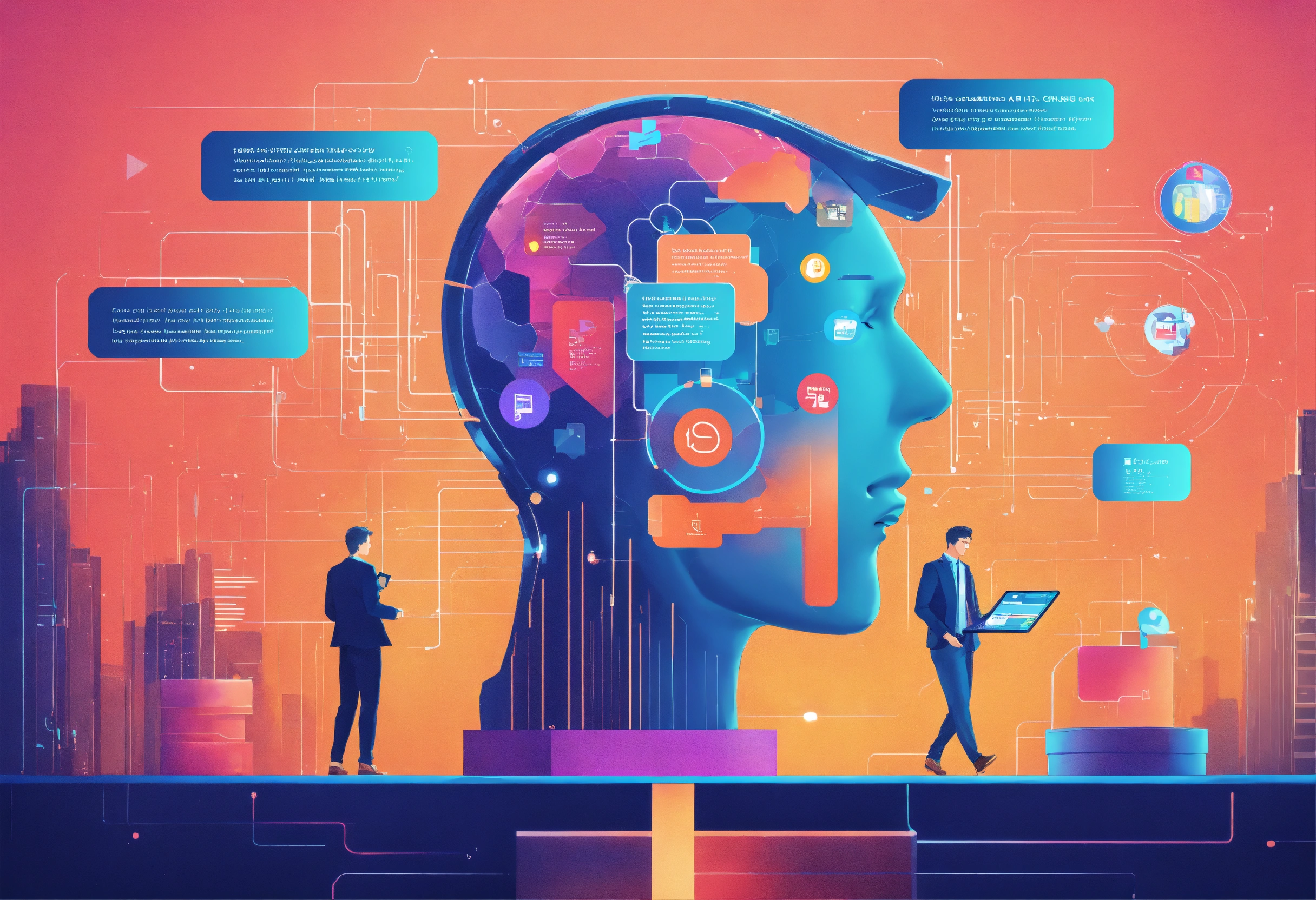With Natural Language Processing (NLP) paving the way for groundbreaking advancements in data analysis, understanding its significance in modern information extraction is paramount. From sifting through vast amounts of text data to extracting key insights with unprecedented accuracy, NLP has revolutionized the way we handle and interpret information. In this article, you will explore into the intricate workings of NLP and discover how it has become a crucial tool in unraveling the complexities of the digital age.
The Evolution of Information Extraction
From Manual to Automated Processes
Before exploring into the advancements of NLP in information extraction, it’s crucial to understand how far we’ve come. In the early days, information extraction was a time-consuming manual process, requiring human analysts to sift through massive amounts of data to find relevant information.
The Rise of Digital Data
On the other hand, with the explosion of digital data in recent years, the need for automated information extraction has become more pressing than ever. Organizations are inundated with vast amounts of unstructured data, ranging from emails and social media posts to reports and customer reviews.
Evolution: For instance, the sheer volume of digital data created every day is staggering. Without automated tools like NLP, it would be impossible to extract meaningful insights from this sea of information efficiently.
The Role of NLP in Modern Information Extraction: Natural Language Processing (NLP) Fundamentals
Definition and History of NLP
Some fascinating aspects of Natural Language Processing (NLP) include its definition and rich history. NLP involves the interaction between computers and humans through natural language. The field dates back to the 1950s with the Turing Test, a milestone in artificial intelligence where a machine’s ability to exhibit intelligent behavior indistinguishable from a human was tested.
Key Concepts: Tokenization, Entity Recognition, and Sentiment Analysis
An vital part of NLP revolves around tokenization, entity recognition, and sentiment analysis. These key concepts form the foundation of NLP algorithms. Tokenization breaks text into individual words or phrases for analysis, entity recognition identifies and classifies entities in text such as names or locations, while sentiment analysis determines the emotional tone or polarity of text.
Processing these key concepts allows NLP systems to understand and derive meaning from human language, making it an indispensable tool in modern information extraction and analysis.
NLP in Information Extraction
Even in modern information extraction, Natural Language Processing (NLP) plays a crucial role in enabling machines to understand and extract valuable insights from text data.
Text Preprocessing and Normalization
Normalization is a fundamental step in NLP for standardizing text data by converting it to a uniform format. This process involves techniques such as converting text to lowercase, removing punctuation, and handling special characters.
Named Entity Recognition and Disambiguation
Preprocessing text is vital for Named Entity Recognition (NER) and disambiguation tasks. It involves identifying entities such as names, locations, and organizations in text data, and disambiguating them to link them to the correct real-world entities.
It allows you to identify and classify specific entities within text, which aids in extracting structured information and understanding the context of the text more accurately.
Relationship Extraction and Event Detection
Normalization of text is crucial for Relationship Extraction and Event Detection, as it helps in identifying and extracting meaningful connections between entities and events mentioned in text data.
To extract valuable insights such as associations, interactions, and events from text data, you need to analyze the relationships between entities and events mentioned in the text, which can provide valuable information for various applications.
Applications of NLP in Modern Information Extraction
Sentiment Analysis in Social Media Monitoring
After analyzing text data from social media platforms, you can gain valuable insights into public opinion, trends, and sentiments. Understanding the sentiment behind posts, comments, and reviews can help you assess brand reputation, customer satisfaction, and market perception.
Entity Disambiguation in Knowledge Graph Construction
Applications of NLP technologies in entity disambiguation play a crucial role in knowledge graph construction. Resolving ambiguous references to entities and linking them accurately in a knowledge graph enhances data quality, semantic understanding, and information retrieval efficiency.
Event Detection in News Article Analysis
Analysis of news articles using NLP techniques enables the automatic detection of important events, trends, and developments. Identifying key events in real-time news analysis can assist in risk assessment, market forecasting, and decision-making processes.
Challenges and Limitations of NLP in Information Extraction
Handling Noisy and Unstructured Data
Not all data is clean and neatly organized, which poses a challenge for NLP in information extraction. Handling noisy and unstructured data requires advanced techniques to preprocess and clean the data before extracting valuable information.
Addressing Ambiguity and Contextual Dependence
The complexity of language often leads to ambiguity and contextual dependence, making it challenging for NLP systems to accurately extract information. Addressing ambiguity and contextual dependence requires sophisticated algorithms that can understand nuances and context in language.
Contextual understanding becomes crucial in resolving ambiguity and dependency, as words can have different meanings depending on the context in which they are used. NLP systems need to analyze the surrounding text to accurately extract information.
Dealing with Domain-Specific Knowledge
Limitations arise when NLP systems lack the domain-specific knowledge required for accurate information extraction in specialized fields. Adapting NLP models to different domains can be challenging, as they may not perform optimally without the necessary domain-specific knowledge.
Domain Specific knowledge integration involves training NLP models on domain-specific data and incorporating specialized lexicons and terminologies to improve information extraction accuracy within specific domains.
Future Directions and Emerging Trends
Multimodal and Multilingual Information Extraction
Directions: The future of information extraction lies in the integration of multimodal data sources and the ability to extract information from multiple languages. By combining text, images, and audio, NLP systems can provide a more comprehensive understanding of the data, leading to richer insights and context.
Explainable AI and Transparency in NLP Models
Extraction: Ensuring transparency and explainability in NLP models is crucial for building trust and understanding how decisions are made. This not only enhances the accountability of AI systems but also helps in identifying biases and errors, leading to more accurate and ethical information extraction.
Plus, as NLP technologies become more advanced, the need for interpretable and transparent models becomes increasingly important. In order to mitigate potential risks and ensure the responsible use of AI in information extraction, researchers and developers are focusing on creating models that can provide explanations for their outputs.
Human-AI Collaboration in Information Extraction
On: Collaborative approaches involving humans and AI in the information extraction process are gaining traction. By combining the strengths of human intuition and AI efficiency, organizations can achieve higher accuracy and relevance in the extracted information, leading to more informed decision-making.
To wrap up
From above, you now have a better understanding of the crucial role that Natural Language Processing (NLP) plays in the modern process of information extraction. NLP algorithms have revolutionized the way we interpret and analyze vast amounts of text data, enabling us to extract valuable insights and knowledge from unstructured information. As you probe deeper into NLP, you will continue to witness its profound impact on various industries and the way we interact with data. Embrace the power of NLP in your endeavors, and unlock the true potential of information extraction.
FAQ
Q: What is the role of NLP in modern information extraction?
A: Natural Language Processing (NLP) plays a crucial role in modern information extraction by enabling computers to analyze, understand, and extract meaningful information from large volumes of unstructured data. NLP algorithms help identify patterns, relationships, and trends within text data, allowing businesses and researchers to make informed decisions based on valuable insights.
Q: How does NLP enhance information extraction processes?
A: NLP enhances information extraction processes by applying linguistic rules and machine learning techniques to text data. By utilizing NLP tools such as named entity recognition, sentiment analysis, and document clustering, organizations can automate data extraction, categorization, and summarization tasks more efficiently. This not only saves time and resources but also improves the accuracy and consistency of extracted information.
Q: What are some practical applications of NLP in information extraction?
A: NLP finds practical applications in various fields such as healthcare, finance, customer service, and market research. In healthcare, NLP helps extract valuable insights from medical records to improve patient care and treatment outcomes. In finance, NLP aids in analyzing market trends, sentiment, and news articles to make informed investment decisions. Moreover, customer service departments use NLP to extract key information from customer feedback and interactions to enhance satisfaction levels. Overall, the role of NLP in modern information extraction continues to expand across different industries, driving innovation and efficiency.





